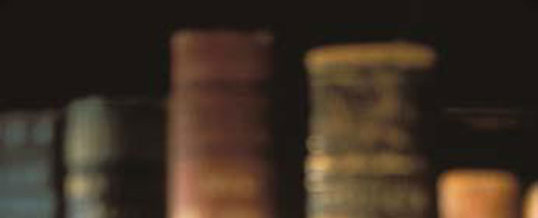
The traditional English translation for the disease tzora’at that is eponymous with this week’s Torah portion, Metzora, is “leprosy.”
However, as our commentators explain, biblical leprosy was something very different from the bacterial leprosy of modern times that is attributed to the bacillus Mycobacterium leprae.
Biblical leprosy traces to a different kind of disease, an infection permeating the spirit and the soul, the disease of lashon hara (or its Ashkenazic variant spelling, lashon hara): evil talk, tale bearing and gossip.
Thus, the deeply righteous Miriam, one of the saintliest women in Jewish history, is stricken temporarily with the tzora’at when she speaks improperly of her brother, Moses, and his wife Tziporah (Numbers 12:10). Some commentators see a manifestation of comparable punishment when Moses himself stands before Hashem atop the mountain of the burning bush, saying that he hesitates to accept the mantle of leadership being placed on his shoulders because the Jews will not accept him. The Voice tells Moses to put his hand in his cloak and immediately to take it out. His fresh skin becomes leprous (Exodus 4:6). He should not have said, without actual basis, that the Jews would reject the leader sent to them by Hashem. He then is told to place the hand back inside and again to remove it, and his skin is restored.
It is not always so easy to cure biblical leprosy. In one famous rabbinical account, it is as difficult to reverse the ill effects of slander as it is to retrieve all the feathers in an exposed pillow that has been blown about by the wind. That symbolizes the precise impossibility of setting aright the status of a person who has been victimized by gossip and its more grave “cousin” hotza’at shem ra (the dissemination of a bad name, meaning outright slander). Whereas lashon hara — the unnecessary dissemination of true reports that reflect unfavorably on their target — is gravely sinful, outright slander is beyond the pale.
As with so many laws, there are nuances. Is it lashon hara to speak adversely of Haman on Purim, of Pharaoh on Passover, of Tomas Torquemada, of Queen Isabella, of Bogdan Chmielnitski and his Cossacks, of Hitler and his Nazis? The answer is clear. And thus we find the contours of the spectrum, the sliding scale, that define the perimeter of what is forbidden and what is permitted.
If someone wants to marry a particular person and asks me whether I know any reason that the shidduch (the match) should not be made, I am obliged by halachah, or Jewish law, to disclose accurately what I know, even if it means warning against a bad match. If someone else seriously contemplates entering into a business partnership with a person whom I know to be dishonest, I am obliged to disclose what I know. For that matter, if someone asks me whether I would endorse a certain candidate for election to public office, if I cannot vote for that person because he or she is dishonest, or otherwise is unfit, I am halachically bound to disclose what I know. None of that is lashon hara or hotza’at shem ra.
But even in daily life, there are perimeters and contours. The stand-up routines on late-night television typically transcend what I need to hear, what I am duty-bound to disclose or learn, and typically veer off into forbidden language. Yes, it is all “in fun.” And the American culture has a long history of encouraging lampooning people of power and prominence. Thomas Nast’s cartoons exposed and brought down Boss Tweed of New York. The United States Supreme Court, in an opinion written by a deeply conservative William Rehnquist, upheld Larry Flynt’s right under the First Amendment to use his Hustler Magazine to smear a prominent Christian minister in a vicious “parody” that suggested “in good fun” that the minister had engaged in immoral physical acts with his mother in an outhouse. And that is the American way. But that is not the way of halacha.
Whereas “truth is a complete defense” in American law to any allegation of defamation, Jewish law answers to a higher standard. More than truth, the halacha looks at necessity. What was the necessity? Was it legitimate whistle-blowing against corporate malfeasance? Was it to warn the public — or the prospective spouse, or the prospective business partner — of financial improprieties or other behavior that absolutely needed to be shared? Then it can be legitimate, even halachically mandated.
By contrast, if the smearing is to garner an extra laugh, to raise oneself up a notch at someone else’s expense, to mock for the sake of mocking, to denigrate for the sake of denigrating, or just to attempt destroying a person out of spite or personal pique — then it is forbidden and worse.
And when forbidden gossip, tale-bearing and slander break loose, we read in this week’s Torah portion that the filth can infect one’s clothes, one’s house, one’s very walls. So a Kohen is assigned the many ritual laws to effectuate a surface cleansing. But in today’s world, without a Beit HaMikdash (Holy Temple) and Kohanim in service, we are left primarily to police ourselves with the knowledge that a Creator who would not abide the slandering of Jews by our greatest prophets (see also commentaries explaining Isaiah 6:5-7 and Talmud Bavli, Tractate Yevamot 49b) will not abide slander by those less great.
Share